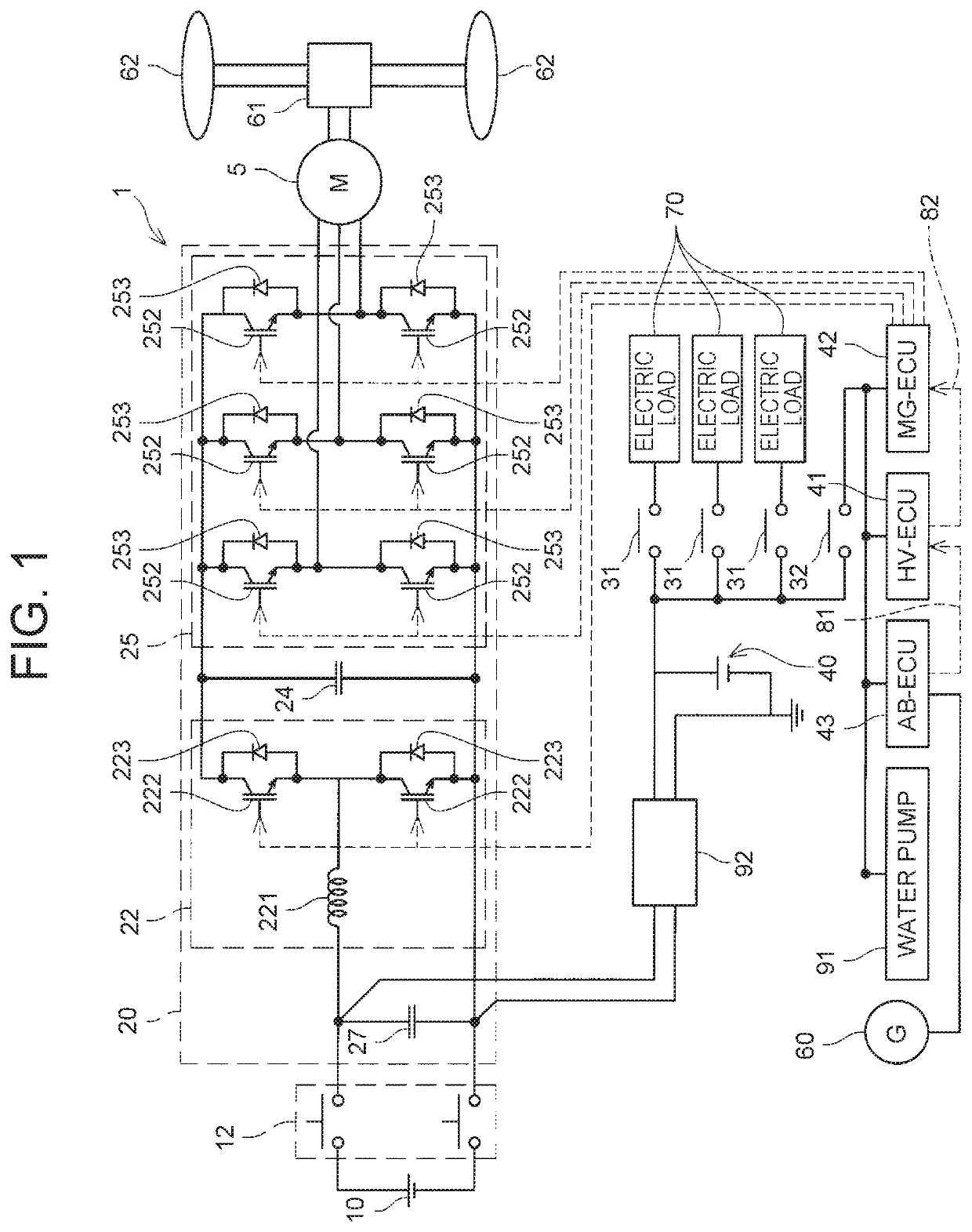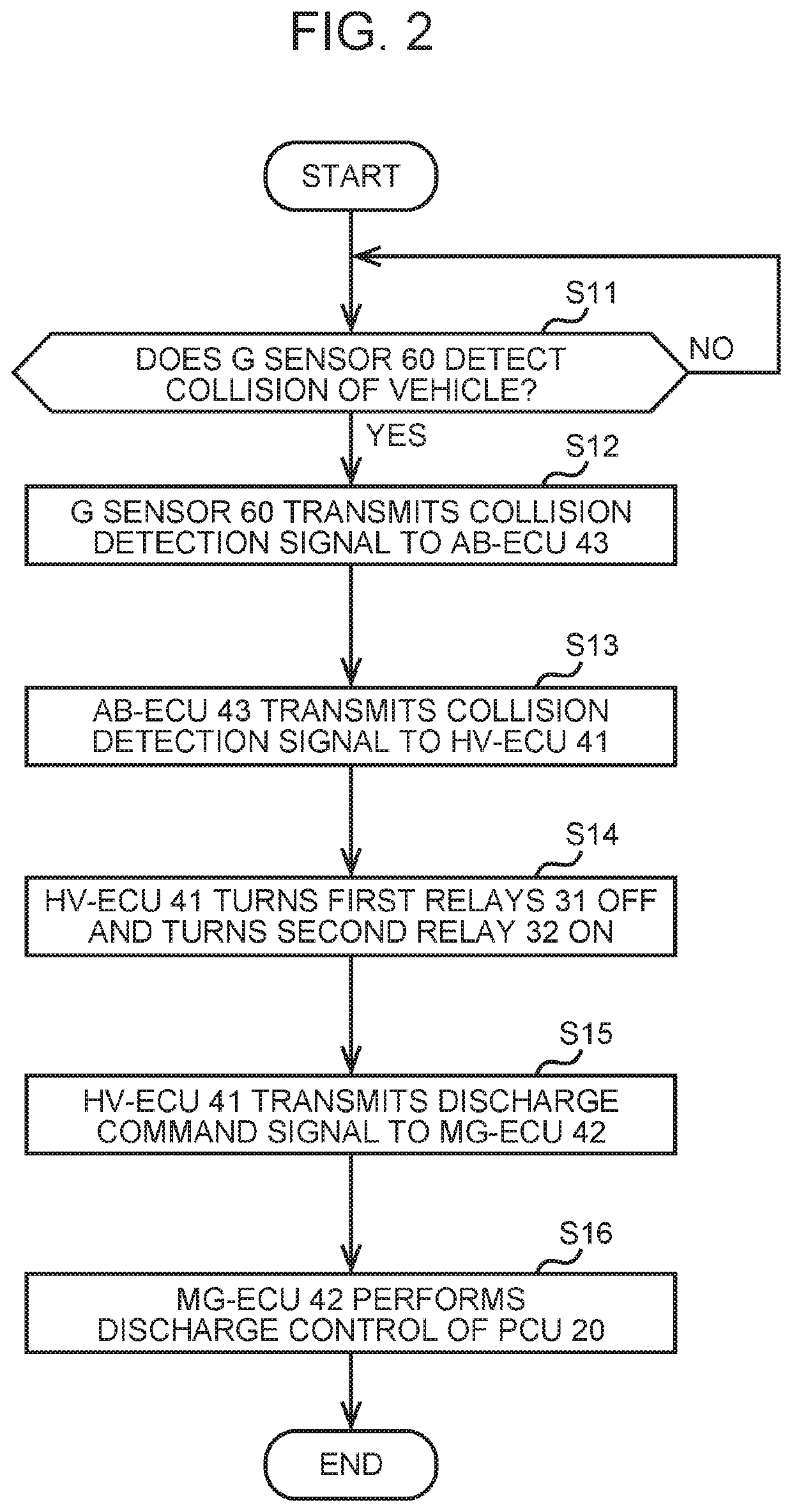Battery system for vehicle
a battery system and vehicle technology, applied in battery/fuel cell control arrangement, safety/protection circuit, electric devices, etc., can solve the problems of reducing the voltage applied to affecting the operation of the electronic control unit, and affecting the performance of the auxiliary battery, so as to suppress the voltage drop
- Summary
- Abstract
- Description
- Claims
- Application Information
AI Technical Summary
Benefits of technology
Problems solved by technology
Method used
Image
Examples
Embodiment Construction
[0018]A battery system 1 for a vehicle according to an embodiment as one example of the present disclosure will be described with reference to the drawings. As illustrated in FIG. 1, the battery system 1 includes a main battery 10, a system main relay 12, a power control unit (PCU) 20, and a motor 5 for the vehicle. The battery system 1 includes an auxiliary battery 40, a plurality of electric loads 70, a hybrid vehicle-electronic control unit (HV-ECU) 41, a motor generator-electronic control unit (MG-ECU) 42, an air bag-electronic control unit (AB-ECU) 43, a water pump 91, and an acceleration sensor (referred to as a G sensor below) 60.
[0019]The battery system 1 illustrated in FIG. 1 is mounted, for example, on a hybrid vehicle (illustration omitted). The hybrid vehicle is a vehicle that travels with an electric motor and an unillustrated gasoline engine as power sources. The vehicle mounted with the battery system 1 may be a motor vehicle that does not include the gasoline engine....
PUM
 Login to View More
Login to View More Abstract
Description
Claims
Application Information
 Login to View More
Login to View More - R&D
- Intellectual Property
- Life Sciences
- Materials
- Tech Scout
- Unparalleled Data Quality
- Higher Quality Content
- 60% Fewer Hallucinations
Browse by: Latest US Patents, China's latest patents, Technical Efficacy Thesaurus, Application Domain, Technology Topic, Popular Technical Reports.
© 2025 PatSnap. All rights reserved.Legal|Privacy policy|Modern Slavery Act Transparency Statement|Sitemap|About US| Contact US: help@patsnap.com


